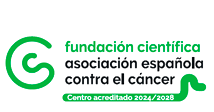2017/01/10
CIC bioGUNE researchers uncover the molecular mechanism of PCNA protein sliding on DNA
The work, published in the journal Nature Communications, suggests modulator molecules of sliding as possible functional inhibitors
In the long term, the research may help to uncover PCNA inhibitors potentially useful for cancer treatment
Francisco J. Blanco and Nekane Merino, both from CIC bioGUNE, and scientists from the Elettra Sincrotrone Research Centre and the Institute of Advanced Chemistry of Catalonia have worked together on this study
(Bilbao, 10 January 2017). A CIC bioGUNE study, conducted in collaboration with the Elettra Sincrotrone Research Centre and the Institute of Advanced Chemistry of Catalonia, has uncovered the molecular mechanism of PCNA protein sliding on DNA. In the future, this information may open up new pathways to discover PCNA inhibitors potentially useful for cancer treatment.
PCNA is a ring-shaped protein which slides on the DNA and acts as a device to hook various enzymes which modify the DNA, particularly those which make an identical copy of the genetic material.
This research, published in the journal Nature Communications under the title “Structural basis of human PCNA sliding on DNA”, uncovers the mechanism of PCNA sliding on DNA.
Dividing cells need to replicate their DNA and ensure that each daughter cell has an identical copy of the genetic material.
DNA replication requires a multi-protein machinery whose central piece is PCNA, a protein which encircles the DNA and recruits other components that perform the DNA synthesis. PCNA is critical for cell proliferation, a hallmark of tumors, and a drug target for anti-cancer therapy.
Co-led by the Ikerbasque research professor Francisco J. Blanco, the project has involved the joint efforts of seven researchers, including three from the Elettra Sincrotrone Research Centre and two from the Institute of Advanced Chemistry of Catalonia. The team from CIC bioGUNE has comprised Dr. Francisco J. Blanco, PhD in Chemistry, and Nekane Merino, PhD in Biology.
As Dr Blanco points out: “Exactly how PCNA slides on the DNA was unknown, as the interaction between the two was of a very weak nature. Through a hybrid approach combining three structural analytical methods we have seen how certain atoms within the ring recognise the spiral formed by the double helix of the DNA and slide along it in cogwheel fashion”.
Identifying the mechanism of PCNA sliding on DNA enables us to understand the functional effect of mutations in PCNA. Furthermore, this same mechanism would suggest that modulator molecules of sliding could be used as functional inhibitors.
Foremost amongst the various difficulties the CIC bioGUNE team has come up against in the 3 years spent working on the project has been “weak interaction among the molecules, especially when short DNA fragments are used to study their structure”, explains Dr. Blanco. Research has been conducted through studies in solution using Nuclear Magnetic Resonance (NMR), X-ray diffraction and crystallography techniques and computational simulations.
The Structural Biology of Cancer Laboratory at CIC bioGUNE contributed study findings on PCNA-DNA interaction using NMR. Likewise, the Structural Biology Laboratory at the Elettra Sincrotrone Research Centre was instrumental in determining the 3D structure of the complex whilst the Institute of Advanced Chemistry of Catalonia described the molecular dynamics of the complex.
About CIC bioGUNE
The Centre for Cooperative Research in Biosciences (CIC bioGUNE), located in the Bizkaia Technology Park, is a biomedical research organisation conducting cutting-edge research at the interface between structural, molecular and cell biology, with a particular focus on the study of the molecular bases of disease, for use in the development of new diagnostic methods and advanced therapies.
See a large version of the first picture

See a large version of the second picture





